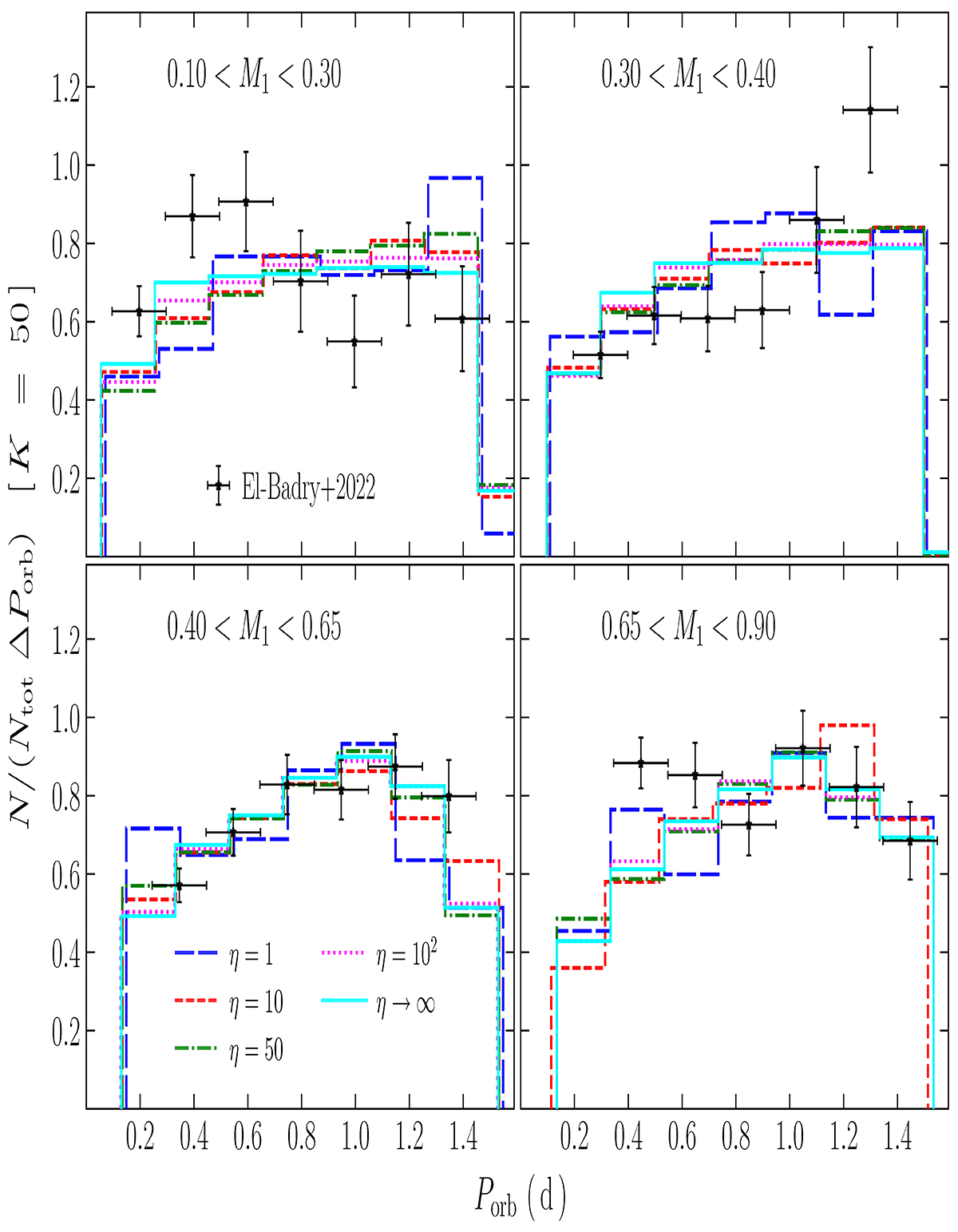Fig. 4.

Download original image
Comparison between the observed orbital period distributions for different mass bins (El-Badry et al. 2022) and the predicted assuming K = 50 and several values of η. The line types and colours indicate the assumed value of η, while each panel corresponds to a different primary mass bin, being 0.10 − 0.30 M⊙ (top left panel), 0.30 − 0.40 M⊙ (top right panel), 0.40 − 0.65 M⊙ (bottom left panel), and 0.65 − 0.90 M⊙ (bottom right panel). It is clear from the figure, especially when the binaries host only fully convective stars (top left panel), that the strength of magnetic braking does not strongly contribute to shape the distributions. On the other hand, the orbital period distribution of main-sequence binaries is strongly affected by how the magnetic braking torque depends on the star spins as shown by El-Badry et al. (2022).
Current usage metrics show cumulative count of Article Views (full-text article views including HTML views, PDF and ePub downloads, according to the available data) and Abstracts Views on Vision4Press platform.
Data correspond to usage on the plateform after 2015. The current usage metrics is available 48-96 hours after online publication and is updated daily on week days.
Initial download of the metrics may take a while.


